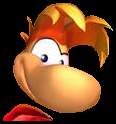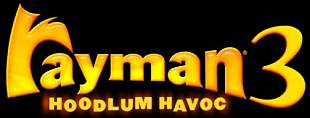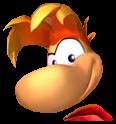Pauline
Jacquey - Senior Producer
Raymanzone: Could
you introduce yourself briefly? Pauline Jacquey :
My
name is Pauline Jacquey, I'm 28, and I collect octopuses. After being project
manager or "producer" on Rayman 2 ("producer" has more of a Hollywood ring about
it, even though the salary remains the same!) - and working on design in the United
States and Shanghai - I became "senior producer" on the last nine months of production
for Rayman 3, alongside Ahmed Boukhelifa.
How
does one come to be project manager on a game like Rayman 3?
I graduated from a school of management, which allowed me to pick up a general
training. But, like most people who work in this industry, I was really interested
in everything but management - in my case, the cinema, music, TV, high-tech gadgets
and games in general. I reckon it was this interest in the entertainment sector
that pushed me towards video games in the first place. This is an industry where
50% of the people you work with are artists (graphic designers, animators, musicians,
scriptwriters, game designers), and the other 50% are highly specialized technically
(engineers and game programmers). So nearly all the entertainment professions
get thrown in together, with an added technological dimension on top.
In
a few words, what does your job involve?
My job is mainly organizational
- that is, my mission involves creating the best possible work structure for each
member of the development team. I'm surrounded by specialists from different fields
(programming, game design, graphic design, animation, etc.) and it's up to me
to ensure that their work is correctly coordinated. I work with a director, just
like in the movie industry, and he's responsible for the creative vision of the
game. My work also includes sticking to a budget, monitoring technological developments,
market analysis and a lot of communication within my company to make sure the
team can work calmly, in a climate that's conducive to self-expression.
What
made you want to work in the video game sector?
I always wanted
to work in a sector with a mix of artistic and technical skills. After two not
very satisfactory internships in publishing and television, I joined Ubi Soft
in 1997 and cut my teeth on Rayman 2, after working as an assistant to one of
the brothers who founded the company. At the time, I thought the video game industry
was a fun, big-budget field to work in - and I wasn't mistaken!
What's
it like being a woman in such a masculine sector?
It doesn't
make much difference, really. I work with teams that judge me by my work - full
stop. In France, or in the United States, I never felt that being a woman influenced
the reactions of the people I worked with in any way. The only time I found it
difficult to impose my point of view was in China, and this was undoubtedly because
I'm a woman and over there it's not very common for women to manage teams of men.
But that experience didn't work out too badly in the end.
What
advice would you give to someone wanting to become a video game project manager?
Clearly, you're always better equipped with a prestigious general education from
a high-ranking engineering or business school. But, that said, it's not essential.
Higher education plus international experience, and a keen interest in video games,
cinema, and so on, could suffice. What's more, any personal project you've seen
through from start to finish - a short film you made with friends, a rock group,
a model for a platform game - is always an advantage if you want to work in this
industry.
Thank you Pauline ! |





